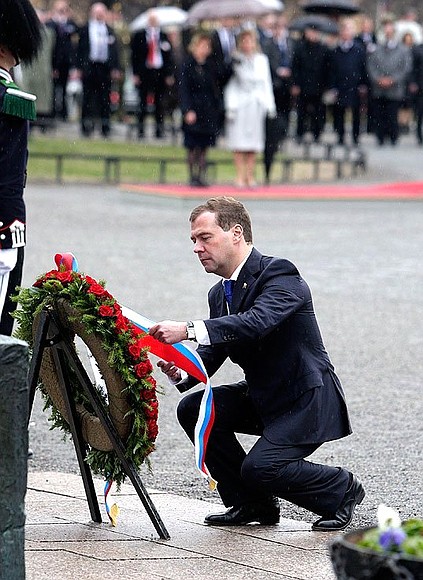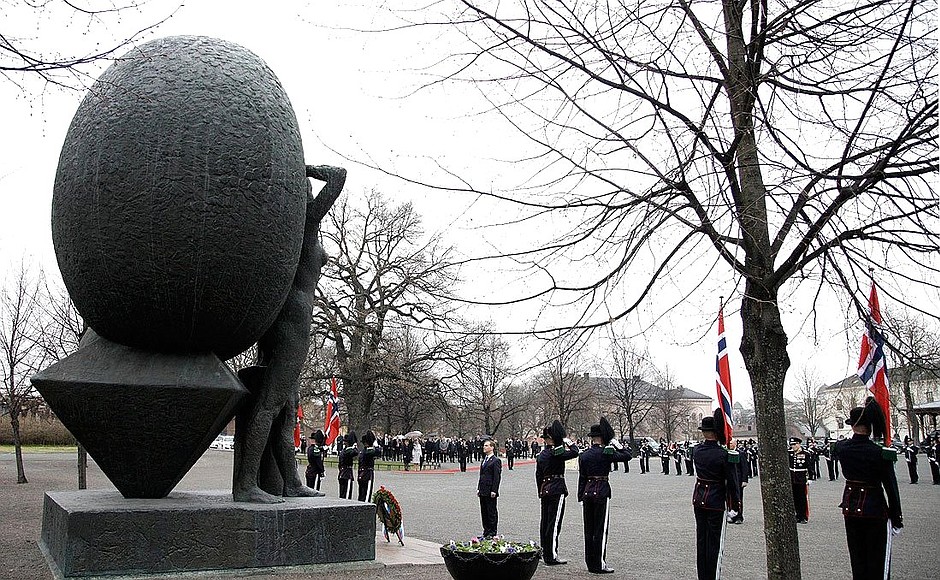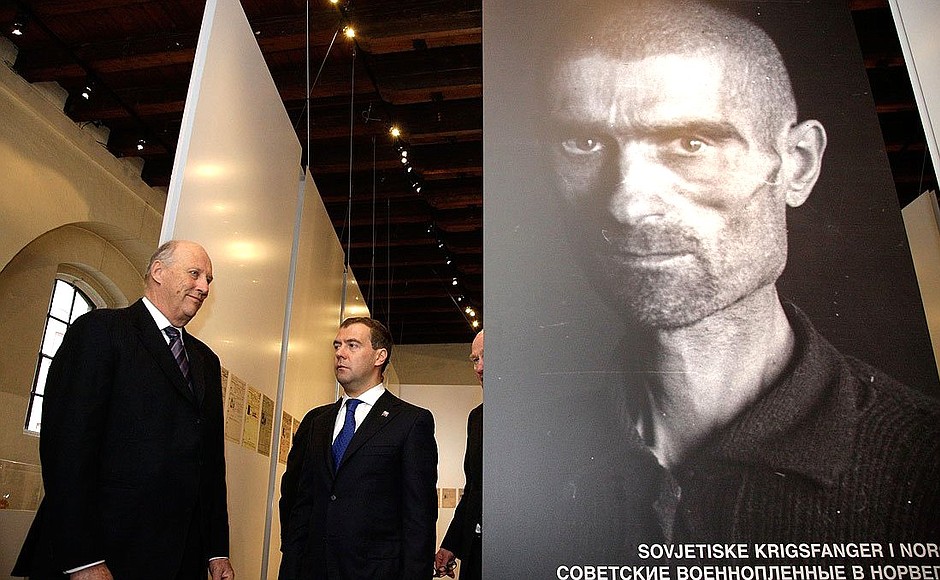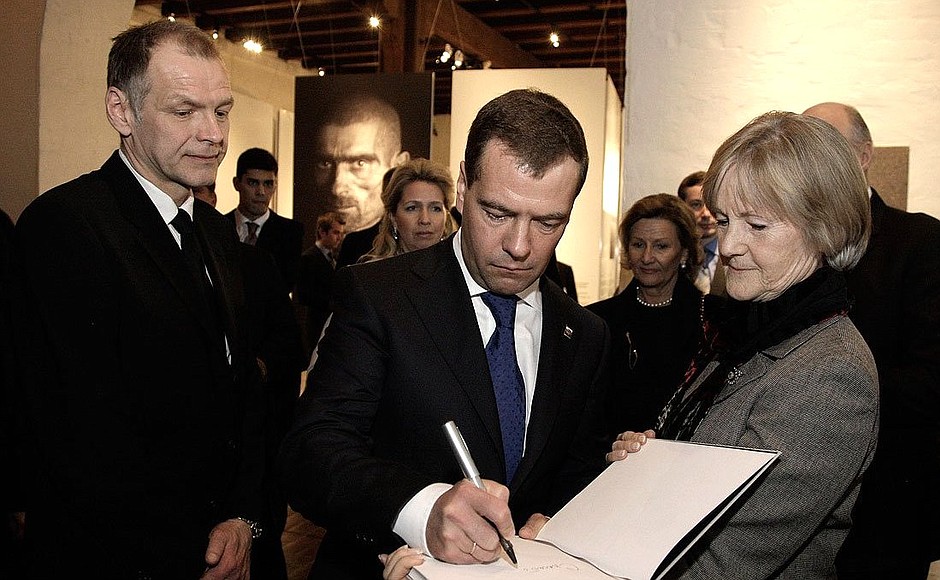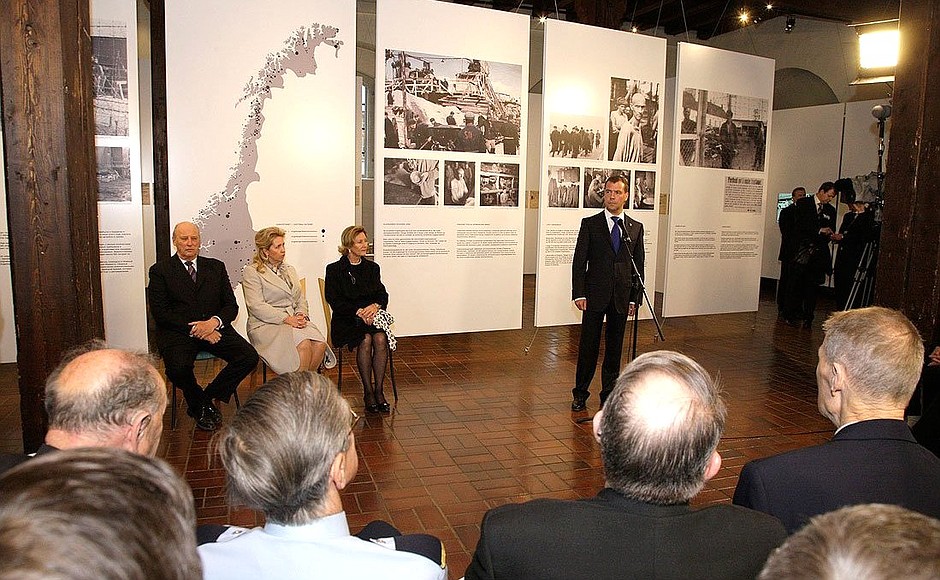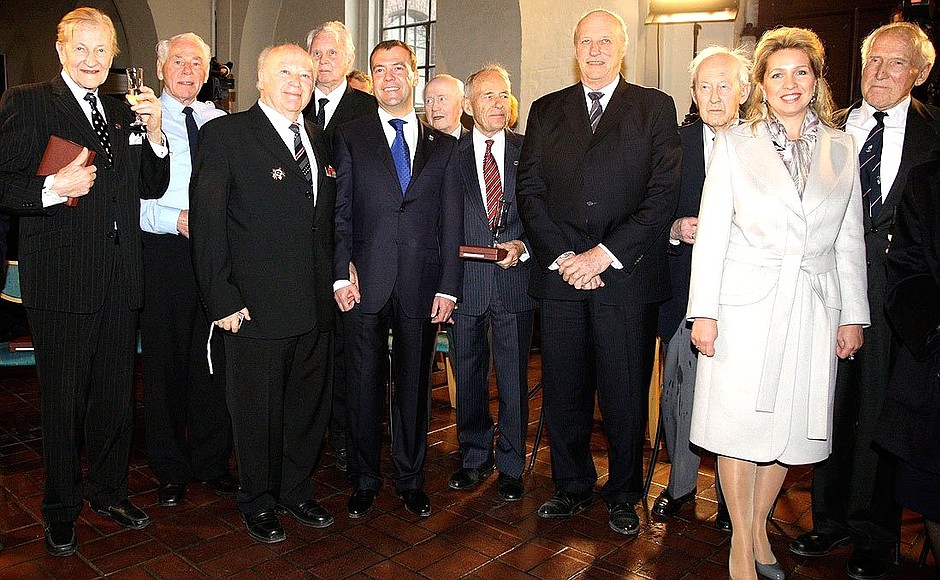All the veterans participated in the Petsamo-Kirkenes Operation during which the Red Army liberated the eastern part of Norway.
During his meeting with veterans at the Norwegian Armed Forces Museum, President Medvedev stressed the importance of preserving the truth about World War II and preventing attempts to rewrite history to suit the ambitions of individual politicians.
Dmitry and Svetlana Medvedev, King Harald V of Norway and Queen Sonja visited an exhibition dedicated to Soviet prisoners of war buried in Norway. In 2009, the Falstad Memorial and Human Rights Centre launched a project called Soldiers' Graves Need Names which aims to collect information to identify nearly 11,000 Soviet prisoners of war who died in Nazi concentration camps and were subsequently buried in Norway.
More than 4,000 Soviet soldiers died in battle during the liberation of northern Norway. Their remains were exhumed and transferred to Russia for reburial in Murmansk Region in 1951.
* * *
President of Russia Dmitry Medvedev: Your Majesty, ladies and gentlemen, dear Norwegian friends, dear veterans,
It is very exciting to be here today, recalling the events that took place 65 years ago. I also think it is very important for all of us, for future generations, for all those who will be living here in Norway and in Russia.
At the time when we fought together against Nazism, when northern Norway was liberated, when the resistance and partisan units in Norway and our Russian forces helped free Europe from Nazi oppression, the issue was clear. We had a common enemy and that enemy had to be defeated. We accomplished this and that is why today we are celebrating the 65th anniversary of that Great Victory, the end of World War II.
First and foremost I want to thank you, dear veterans, for everything that you contributed to that effort.
Here on Norwegian territory many Soviet citizens met their deaths, both as prisoners of war and fighting against the Nazis to liberate Norway.
The memory of those times for all of us who live in Russia is absolutely sacred. And I would like to sincerely thank the Norwegian leadership, who by virtue of their hard work helped honour the memory of those days by caring for the graves of Soviet prisoners of war and soldiers, for all that they have done. We really do cherish this very highly as a symbol of our friendship.
A great deal of time has passed since then and perhaps now more than ever we particularly feel the need to tell the truth about the war. All of you assembled here are living witnesses of those terrible events. It is very important that in the future the truth about the war be preserved and that there be no attempts to rewrite history to suit the ambitions of individual politicians. Otherwise there is a chance that all of us, in Europe and the whole world, will once again find ourselves in a very serious predicament. That is why I believe that our task, our common goal is to preserve the truth about the events that took place. This truth is presented here, in this museum, at this exhibition. And it touches my heart.
Once again and on behalf of the Russian people, I would like to thank all those who contributed to preserving the memory of those difficult days when we fought together against Nazism for the tremendous work that you have done.
Dear veterans,
I would like to congratulate you on the coming anniversary of the victory over the enemy, and to wish you good health. And I would like to present you with these state decorations of the Russian Federation.
Thank you for everything that you have done.

